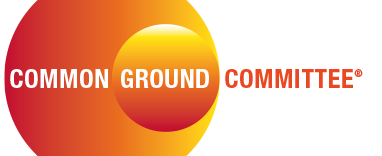Ranked Choice Voting Explained
What is ranked choice voting?
What if instead of casting your ballot for one candidate, you could vote for not just your first choice — but also indicate your second choice, third choice, and so on?
In some states, it’s already happening. Earlier this year, four states — Wyoming, Alaska, Kansas, and Hawaii — used ranked-choice voting (RCV) to reduce the field in the presidential primaries. In Utah, both the Democratic and Republican parties used it for this year’s virtual conventions. And this November, Maine will become the first state to use RCV in the general presidential election.
The process works like this.
- The candidate with the majority of first-choice votes wins outright, as long as the support constitutes more than 50 percent of voters.
- If no single candidate gets 50 percent, then a new counting process kicks off. The last-place candidate is eliminated, and that candidate’s voters have their second-choice pick activated.
- This process continues until there is a candidate who has a 50 percent majority.
- By comparison, the current system elects a winner by the plurality system: the candidate with the highest number of votes wins, period. It doesn’t matter whether the candidate earned the majority (more than 50 percent) of the vote.
What’s the appeal of RCV?
Its supporters stress that the ability to rank choices allows Democrats, Republicans, and Independents to compete on a level playing field. A third-party candidate might not have enough votes to win a plurality, but its supporters’ second-choice vote would have a voice. In this way, voters feel free to choose the candidates they like best as their first-choice pick, without worrying that their vote will somehow help the candidate they like least. A voter can rank in first place a third-party candidate who has little chance of winning, and select the major-party candidate they can tolerate most for their second-place vote. In this way, RCV allows people to vote for third-party candidates without “throwing away their vote.”
Ranked choice voting allows political parties to produce nominees with broad support, even in a crowded field of candidates. In the current system, a large field of contenders threatens to produce a nominee with strong support from a small group, but without broad support from the voters. Currently, candidates with similar platforms or experiences can split supporters, dividing the votes and potentially helping a more polarizing candidate with a less popular platform to surge ahead. To keep this from happening, candidates seen as longshots are pressured to drop out — and their diversity of opinion is lost, giving voters less choice.
RCV advocates say the system motivates candidates to work together rather than attack one another, because candidates risk losing valuable second- and third-place votes by alienating one another’s strongest supporters. And forcing candidates to try to appeal to a broader cross-section of the public makes it much more likely that the winner will be open to moderation, compromise, and building nonpartisan coalitions.
Opponents of RCV exist on both sides of the aisle. Many say it complicates elections for voters, requiring them to be better-educated about (and possibly overwhelmed by) a wider range of candidates, and that it takes more time and money to tabulate multiple rounds of results. There’s also some concern that RCV can be misused to “game the system.” Since candidates often win by being the second choice of those who support less-popular third-party candidates, there’s a baked-in incentive for the major parties to look for third-party candidates on whose coattails they can gain second-place votes.
The jury is still out on whether RCV increases or decreases turnout at the polls. For the time being, it’s being increasingly discussed in states and municipalities — so information and data about it will also be on the rise.
To learn more about voting, and the importance of having a voting plan, see our action plan guide.






